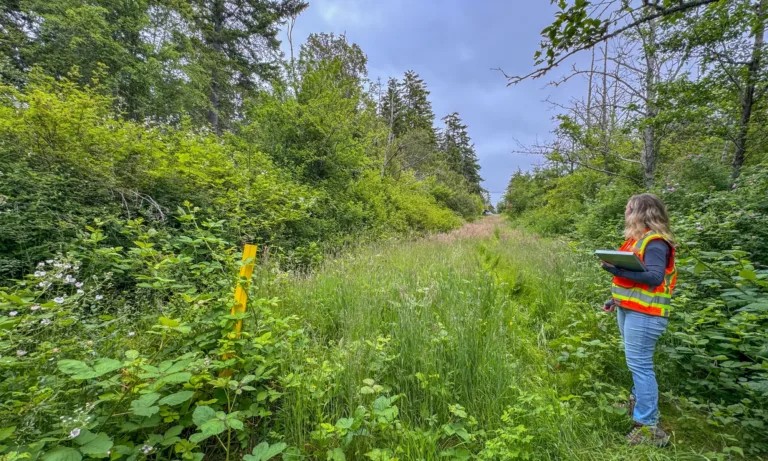
- Gas Pipelines
Project Highlights
- Designed a soft armoring solution to protect a critical natural gas pipeline serving Whidbey Island and a U.S. Navy base.
- Navigated complex permitting processes involving Island County and numerous state and federal environmental agencies.
- Conducted detailed fieldwork and environmental studies to inform design, including geotechnical investigations, ecological research, and cultural resource assessments.
Project Description
The Utsalady Bay Project addresses a critical infrastructure concern involving the only gas pipeline serving Whidbey Island and a nearby naval base. The pipeline, originally installed in 1969, was buried beneath the shoreline but became exposed due to unstable soil conditions and strong oceanic influences. Our firm led a two-phase effort with GeoEngineers to assess the site and develop a sustainable, permittable solution.
Phase 1 included topographic surveying, geotechnical investigations, and conceptual design. Phase 2 delivered a soft armoring approach using natural materials like salt-tolerant vegetation, woody debris, and revetments. The project also involved securing multiple environmental and shoreline permits, conducting fieldwork, and coordinating with agencies including the Washington Department of Fish and Wildlife (WDFW), the National Marine Fisheries Service (NMFS), and the United States Army Corps of Engineers (USACE). Work planning considered tidal schedules, limiting construction to six-hour daily windows.
This project safeguarded a critical energy resource while enhancing shoreline resilience, demonstrating the value of environmentally conscious engineering in protecting infrastructure within sensitive coastal ecosystems. The design aims to protect the exposed pipeline with the ebb and flow of the surrounding environment, while delivering a solution that is visually harmonious with the natural shoreline and aligned with environmental best practices.